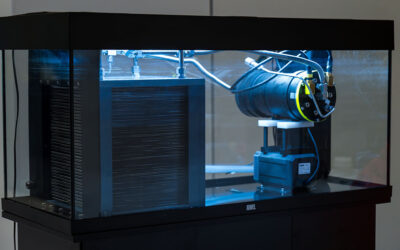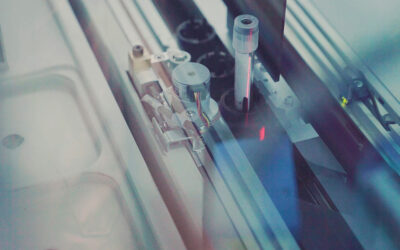Over 70% of the planet is covered by ocean, much of which is unexplored. Deep-sea robots could not only help explore these regions but could also be designed to assist in underwater operations in areas of the sea that humanity has begun to utilize via deep-sea drilling operations, and even the placement of deep sea submarine cables for communication infrastructure. This could involve performing important repair missions and even rescue operations.
Due to the extreme hydrostatic pressure of the deep sea, current deep-sea robots require pressure vessels to protect themselves. This can lead to them having large, bulky designs and features that protect them from high pressure but compromise functional capabilities.
In a paper published in the journal Advanced Intelligent Systems, authors Yi Xu and Fanghao Zhou of Zhejiang University, Hangzhou, China, report a new underwater robot, DeepStalk, capable of operating under hydrostatic pressures as great as 30 Megapascals (Mpc).
These are the kinds of pressures found below 1000 fathoms where the “deep sea” is proposed to begin. Taking its inspiration from nature, DeepStalk does away with hard parts, swapping them for a soft body that functions under pressure, a step toward functioning in the deep-sea.
“DeepStalk marks the first attempt in soft robotics where a camera sensor, actuator, and control module have been integrated into a deep sea robot, enabling complex tasks such as environmental monitoring and target tracking,” Xu said.“It is a soft robot inspired by sea snails’ eyestalks designed for deep-sea exploration.”
Seeing and moving like a sea-snail
The team took strange inspiration for their robot, modeling its visual capabilities on the humble deep-sea snail. The team also modeled DeepStalk’s method of transportation on the sea snail, designing three shape memory alloy springs to mimic its three tentacle flexor muscles.
“The deep-sea snails’ eyestalk is multi-functional. It is capable of displaying different movement patterns and equipped with sensory organs on the tip for environmental detection,” Zhou said. “The structure of deep-sea snails’ eyestalks with sensors and actuators fits our imagination of a small soft robot in the deep sea.”
Like sea snails, DeepStalk is also small in stature, but unlike its inspiration from the animal kingdom and underwater robot predecessors, it doesn’t rely on a hard shell to protect it from the literal pressures of deep-sea exploration. Instead, the team behind the robot said that DeepStalk incorporates its vital equipment within a small soft body, allowing it to operate efficiently under high hydrostatic pressure.
“DeepStalk’s compact, integrated design sets it apart from other deep-sea robots, allowing it to operate without conventional metal pressure casings,” Zhou continued. “Benefiting from the combination of sensor, actuation, and control modules, DeepStalk can perform complex tasks underwater.”
Zhou explained that DeepStalk could work as a deep-sea pivoted rotating platform or “gimbal” for a camera to be utilized in underwater filming and object tracking. The soft robot can also be deployed from stationary platforms or autonomous underwater vehicles , meaning it is capable of offering broad applications in marine research, undersea infrastructure inspection, and environmental monitoring.
Testing under extreme conditions
During testing, the DeepStalk robot successfully maintained its desired bending shape at pressures as great as 30 MPa. It achieved this by passing current through an electrical conductor, producing thermal energy in the SMA springs. Furthermore, DeepStalk demonstrated the capability to track moving objects underwater, showcasing its potential application in challenging environments at depths of up to 20 MPa
“Although the robot’s response speed is slow, its control precision is high under extreme conditions,” Xu said. “Given the complexity of the system, we were surprised that all the components worked well during the sea trial.”
The researchers explained that to transition DeepStalk towards broader applications, they are aiming to address its current limitations. These include the robot’s relatively slow actuation response, which is a little too “snail-like” for their tastes. The team also intends to extend DeepStalk’s maximum operating depth beyond 3,000 meters.
“Future work will involve optimizing the design of the actuation module and the control method to achieve greater flexibility and faster deformation,” Xu concluded. “Additionally, efforts will be made to enhance the pressure-tolerant performance of electronic devices.”
Reference: Yi Xu, et al., A Bioinspired Shape Memory Alloy Based Soft Robotic System for Deep-Sea Exploration, Advanced Intelligent Systems, (2024). DOI: 10.1002/aisy.202300699
Feature image credit: Yi Xu and Mingyu Fan

















